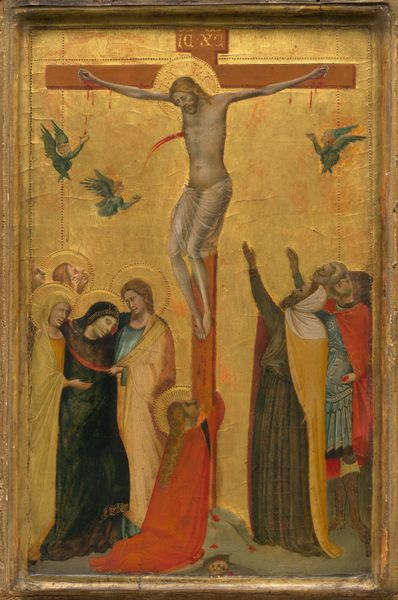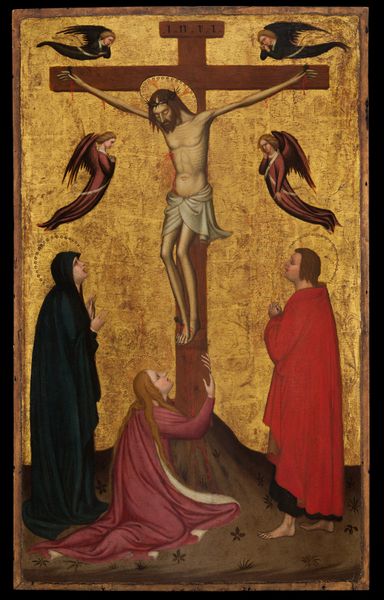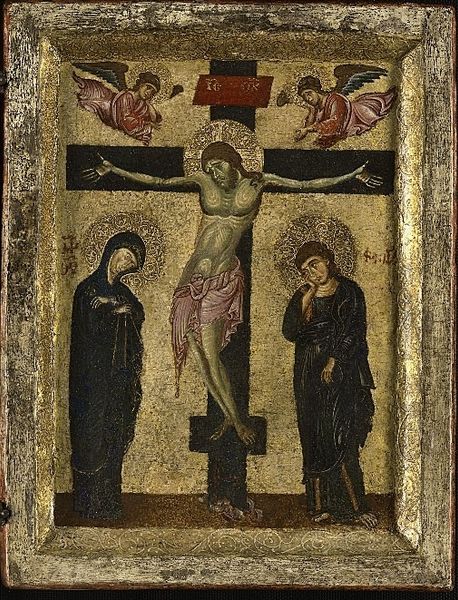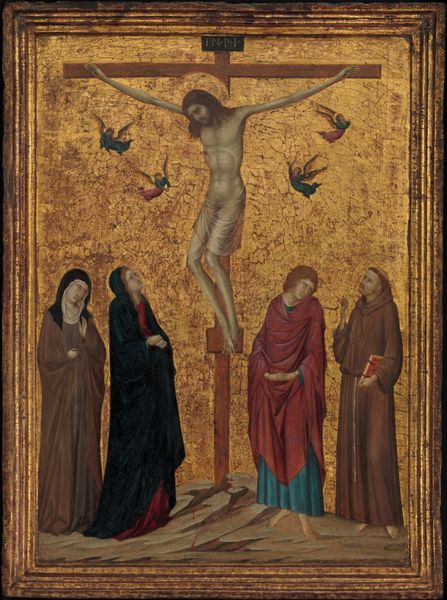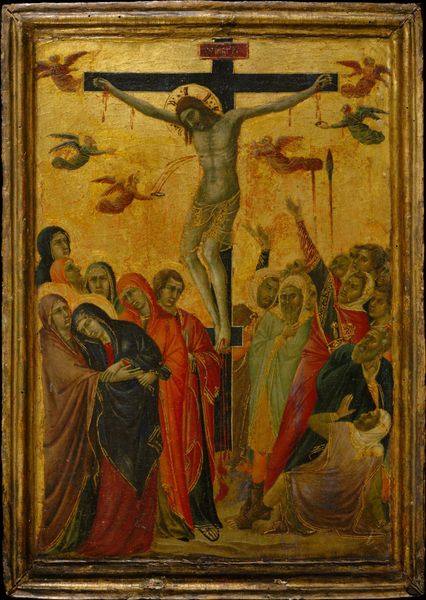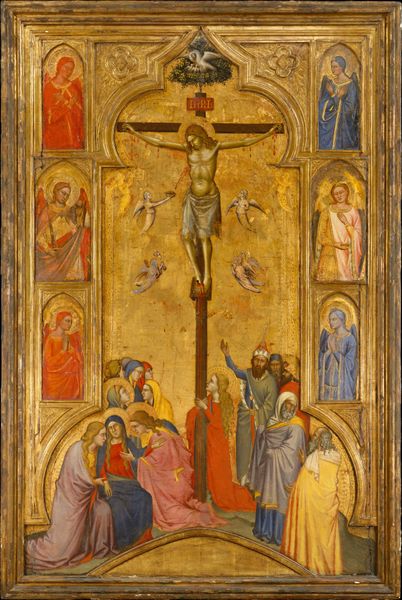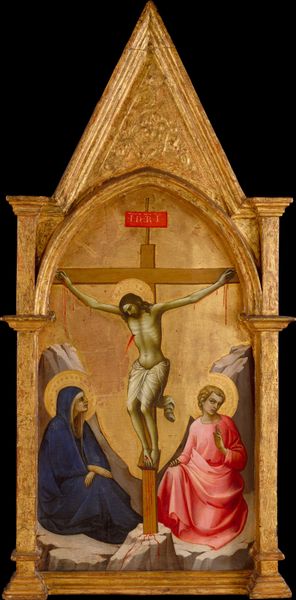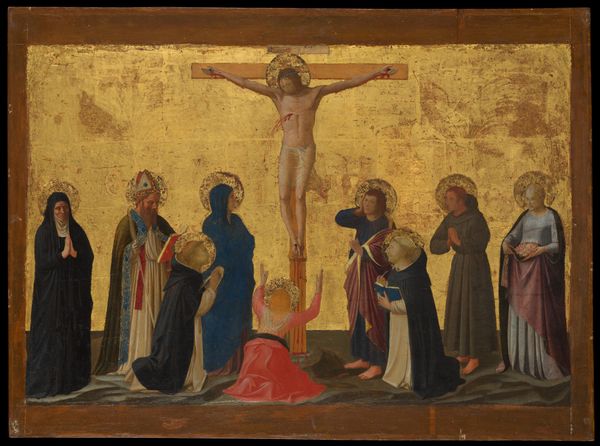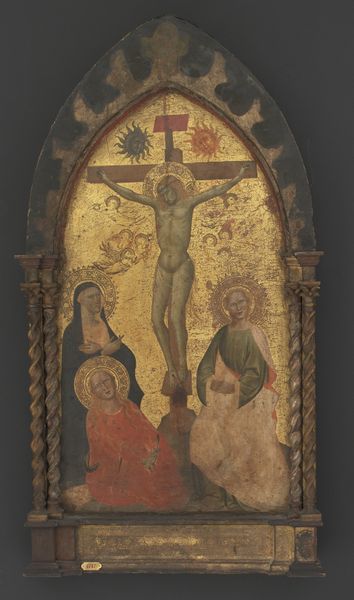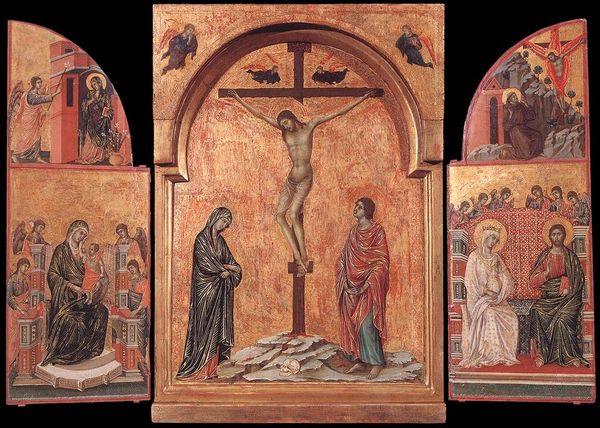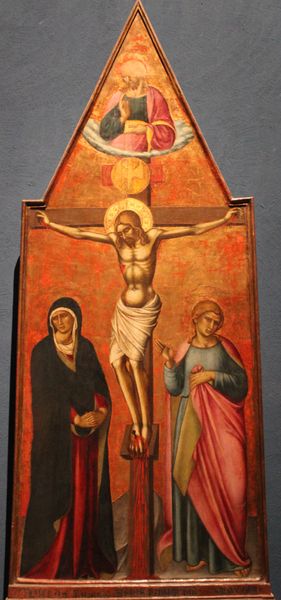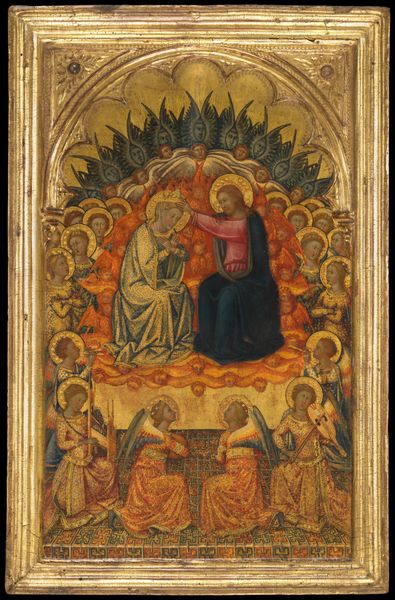
tempera, painting, oil-paint
#
medieval
#
narrative-art
#
tempera
#
painting
#
oil-paint
#
gothic
#
figuration
#
oil painting
#
crucifixion
#
history-painting
#
italian-renaissance
#
virgin-mary
#
christ
Dimensions: Overall 18 1/4 x 11 3/8 in. (46.4 x 28.9 cm); painted surface 17 1/2 x 11 3/8 in. (44.5 x 28.9 cm)
Copyright: Public Domain
Editor: Here we have Bernardo Daddi’s “The Crucifixion,” painted sometime between 1325 and 1330, using tempera and oil paint. There's a stillness in the figures despite the implied violence, a visual weight from the paint. What do you see in this piece, especially in its materials? Curator: I see a meticulous orchestration of material and social forces. Consider the gold leaf, for instance. It wasn't just a decorative element; it represented wealth, status, and divine authority, reflecting the patronage system of the time. The very act of applying it involved skilled labor, embedding social relations into the artwork itself. The choice of tempera mixed with oil, itself a marker of evolving techniques in the guilds, indicates the artist’s engagement with innovation and perhaps market demand. Editor: So, you're saying the value isn’t just in the image, but in the economic realities of its production? Curator: Precisely. How was the pigment sourced? Who ground it? How did the artist learn this method, and how was that skill disseminated? These are questions of production, material transformation, and knowledge transmission – all reflecting broader economic and social dynamics. Even the aging and cracking of the paint layer tell a story of material degradation, environmental conditions, and perhaps, the changing value placed on the object over time. Editor: That really makes you consider the unseen hands that went into creating this piece, and how the materials themselves carry history. Curator: Indeed. Analyzing "The Crucifixion" this way helps us to challenge traditional art history, which might focus solely on iconography or style. By understanding the means of production, we can unpack power dynamics, expose networks of exchange, and ultimately, deconstruct the mythology of the solitary artistic genius. What has changed the way you consider painting now? Editor: It's fascinating to consider art as embedded in the material world. This perspective makes the artwork far more connected to its own time, and to ours. Thank you.
Comments
No comments
Be the first to comment and join the conversation on the ultimate creative platform.
